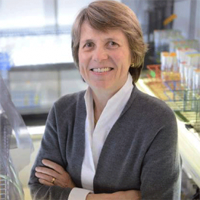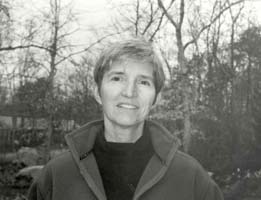Special thanks to Penny Chisholm and Molly Bang for answering 5 questions about their recently featured book – Buried Sunlight: How Fossil Fuels Have Changed the Earth
Sallie “Penny” Chisholm has been fascinated with the sciences for a very long time. She studied Biology and Chemistry as an undergraduate at Skidmore College and then went on to receive her doctorate in Biology at S.U.N.Y. Albany. From there she did post-doctoral work at Scripps Institution of Oceanography, where she became interested in Oceanography. Penny is now a professor at the Massachusetts Institute of Technology (M.I.T.) where she has been teaching Biology and Environmental Science for over thirty years. – From Scholastic
Molly Bang: In the past 10 or 15 years, I have become more concerned about American children’s lack of knowledge about even the most basic scientific principles, and I’ve written four books about science in an attempt to help change this. Even though Common Ground won The Giverny Award for the best children’s science book of 2000 and My Light was chosen as an ALA Notable and won the Massachusetts Book Award for Children’s Literature in 2005, sales of my science books have been universally dismal. I intend to keep trying. – Adapted from Molly’s Homepage
Molly’s Homepage: http://www.mollybang.com
#1 – What was the impetus for Buried Sunlight?
We felt it was important for children – and their teachers and parents – to understand where fossil fuels come from and why burning them so quickly -relative to how long it took for them to accumulate -is causing imbalances in the Earth System. Only if people understand how the Earth works, can they make wise choices about how to use its resources as they go through life.
#2a – The ideas you are presenting can be quite complex. How complex did you try to make it?
We tried to simplify as much as we could and still keep it scientifically correct. The pictures also enabled us to show some things visually, so we could cut back on words. Notes in the back are an attempt to explain the concepts in more detail so adults can help young students understand them more easily. More advanced students can read the notes themselves.
#2b Were you conscious of presenting this complexity to kids?
Yes. It is our hope that even if the children don’t understand the most complex concepts they will at least remember the general framework of the ‘story’ – pick up bits and pieces – and perhaps one day go back to it with greater awareness. In addition, we hope that teachers and parents who use the book will learn something too. Many of the concepts we present in our books are not common knowledge. Our target audience is really everyone.
#3 – What was the working process between you and Molly when it came to designing the text and the visual images?
PC: I lay out what I think we need to cover for a particular topic and describe the main points to be made on each page. Then I write some words, and Molly makes it all flow like poetry and adds some more of her own. Then I edit, and we go back and forth like that, over and over. Molly often adds concepts that she thinks are important, and we change the story line many times before arriving at the final sequence. We often disagree on what is important, but eventually converge on ‘the essence’. Once the words are finished Molly begins the sketches. We discuss them, and make modifications, and then she starts painting. She shows me the pictures, I make comments, she makes changes etc etc. Often we modify the words after the paintings are finished. It is a true collaboration from start to finish. And it is very non-linear! Once the book is finished, I write the notes that go at the end.
#4 – How does this book fit in with your Sunlight series?
It seemed like the logical book to follow the three others. My Light introduces the Sun as the narrator. It is about electricity, and has a section on fossil fuels. Living Sunlight and Ocean Sunlight are about photosynthesis on land and in the oceans, and how this process is the foundation of all life on Earth. Photosynthesis makes all living matter and the oxygen we breathe. On geological time frames, photosynthesis makes fossil fuel. Especially given current concerns about climate change and the misconceptions many people have about it, we felt Buried Sunlight was an important book to make.
#5 – Are you working on any new books/projects that you can tell us about?
We are working on the next book in the series, which is about the Global Water Cycle. Again, the Sun is the narrator. It moves the water from the sea to the sky to the land, and back to the sea again, and moves a great current inside the sea.
[Image Credit: http://chisholmlab.mit.edu/sites/default/files/styles/profile_page/public/NewsImage_PennyChisholm_1.png?itok=tqYtyeke ]
[Image Credit: http://www.hbook.com/wp-content/uploads/2012/07/bang_molly_horz_300x232.jpg ]

